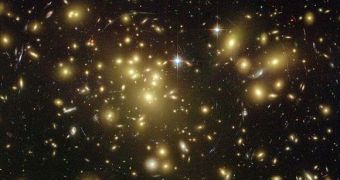For more than 70 years, dark matter has been the holy grail for astronomers and astrophysicists. Discovering it would allow the scientists to finally determine whether their theories on how the Universe appeared, and currently expands, are correct, or if they need to start everything from scratch. Similar to how historians have looked for the mythical island of Atlantis, physicists have proposed over the years a variety of explanations on how dark matter can be detected, but to little avail. Now, a meeting hosted by the University of California in Los Angeles (UCLA) is bringing 140 dark matter scientists from the US, Europe and Asia together, to discuss possibilities.
The scientific gathering is in fact the ninth UCLA Symposium on Sources and Detection of Dark Matter and Dark Energy in the Universe. The meeting is scheduled to conclude today, after three days in which experts discussed recent progress in dark matter detection, DM detector technologies, and possible directions of investigation for the future. “Dark matter is one of the last great frontiers in science. Once we know what it really is, we will break through into a new realm of nature. It's going to be an entirely new era for science, it's going to pose fascinating new questions, it's going to be exciting,” UCLA Professor of Physics and high-energy astrophysicist David B. Cline said. He has also been one of the organizers of the new symposium.
The idea that a substance called dark matter permeates the Universe was proposed in the 1930s by expert Fritz Zwicky, the late scientist from the California Institute of Technology (Caltech). He argued that this substance would explain the inexplicable gravitational pull that galaxies exhibited, but for which regular matter could not account. It is now estimated that dark matter makes up about one quarter of all matter in the Universe, with some five percent being occupied by regular matter, and the rest of 70 percent belonging to another mysterious stuff, dark energy. Current wisdom has it that DM does not interact with normal matter, except through the force of gravity, so it does not emit electromagnetic radiation, detectable with regular instruments.
Experts also discussed recent results, such as the ones published by the team managing the CDMS experiment, in Minnesota. Two possible dark matter events may have been detected at the underground facility, but the scientific community has yet to reach an agreement as to whether these are indeed dark matter-related incidents, or if the detectors have been contaminated by other forms of radiation.

 14 DAY TRIAL //
14 DAY TRIAL //